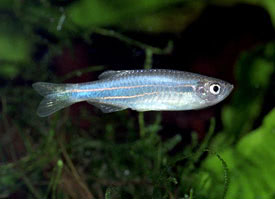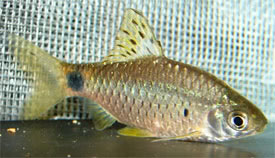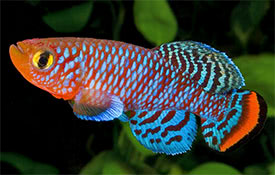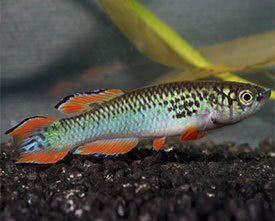
 Magyarul / Hungarian
Magyarul / Hungarian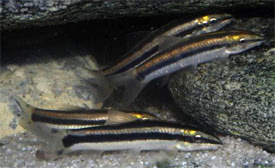
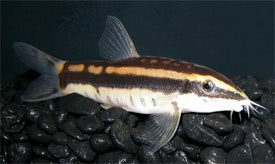
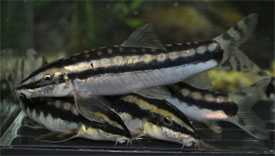

- Scientific name: Ambastaia nigrolineata
- Synonyms: Yasuhikotakia nigrolineata, Botia nigrolineata
- Common name: Black-Lined Loach
- Group: Loaches
- Habitat: Asia; China, Laos and Thailand
- Size: 8-10 cm
- Biotope: Inhabits in the Mekong River basin in fast-flowing streams, and smaller rivers, usually with sandy bottom.
- Social behavior: Quite peaceful loach that can be kept in a community or biotope tank with other peaceful fish that swim in the upper part of the water column. Can be kept with other not too aggressive locahes in very large aquarium.
- Diet: Omnivorous; in nature it mainly eats insect larvae and benthic organisms. In the aquarium it can be fed with small live and frozen foods, and quality dried foods, plus some vegetable matter such as cucumber or spinach. It will eat small snails.
- Breeding: It has not been bred in aquarium.
- Tank: Minimum 90 litres
- Population: 5-8 fish for 140 litres
- Decoration: Use sand or small gravel as substrate. Decorate the tank with with lots of smooth, water-worn rocks and roots. The lighting shouldn’t be bright, and use plants that able to grow in such conditions like Microsorum pteropus or Taxiphyllum barbieri. Water movement can be moderately strong.
- Temperature: 20-25 °C
- pH: 6.5-7.5
- Hardness: 5-15 NK°
- Lifespan: 5-8 years
Description: Yasuhikotakia nigrolineata looks similar to Ambastaia sidthimunki but can be told apart from it by its color pattern: Black-Lined Loach has a broad black midlateral stripe from its nose to its tail, and another stripe along the back. Its background color is lighter below the middle stripe and a darker golden tone above. In mature fish there are numerous transverse, vertical bars connecting the two stripes, as in the Dwarf Loach, but these are less prominent and normally only extend the full distance between the stripes in the rear part of the body. It is relatively new fish to the aquarium hobby thus it is rare in the aquarium trade. It is not extraordinary that during dominance battles or when new individuals added to an existing group, the fish lose of its body pattern and coloration (greying out). Usually the largest specimen leads the group and it is often a female. Another interesting behaviour in the group is that younger fish swim flank-to-flank with larger specimens, mimicking their every movement (shadowing). They are also able to make clicking sounds, usually when excited. Yasuhikotakia nigrolineata like to hide itself into small gaps, so do not use sharp edged or too small decorations in the aquarium, as the fish may become trapped. Black-Lined Loach are often settle on their sides and this appears to be their natural resting behaviour. This species is listed on the IUCN Red List as Vulnerable, due to over-collection, and habitat degradation.
Mature females have fuller body and grow a little larger, while adult males have elongated snouts with thickened lips. There are no reports about their breeding habits.
















